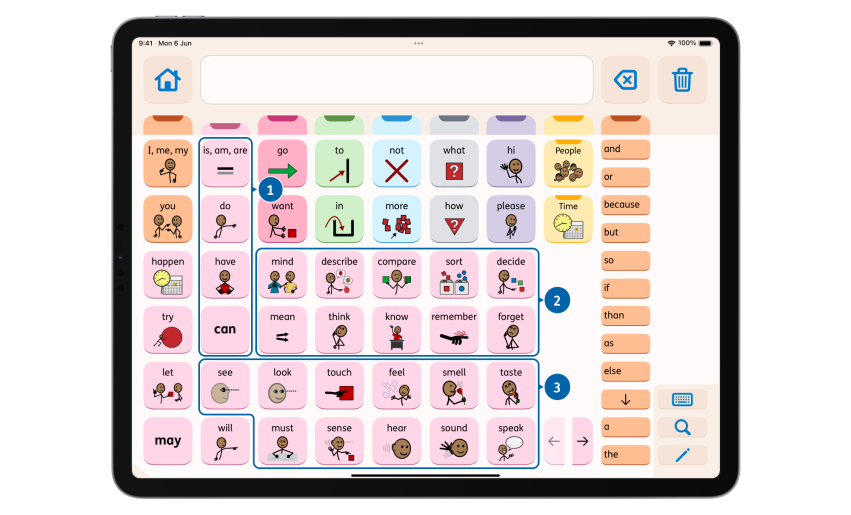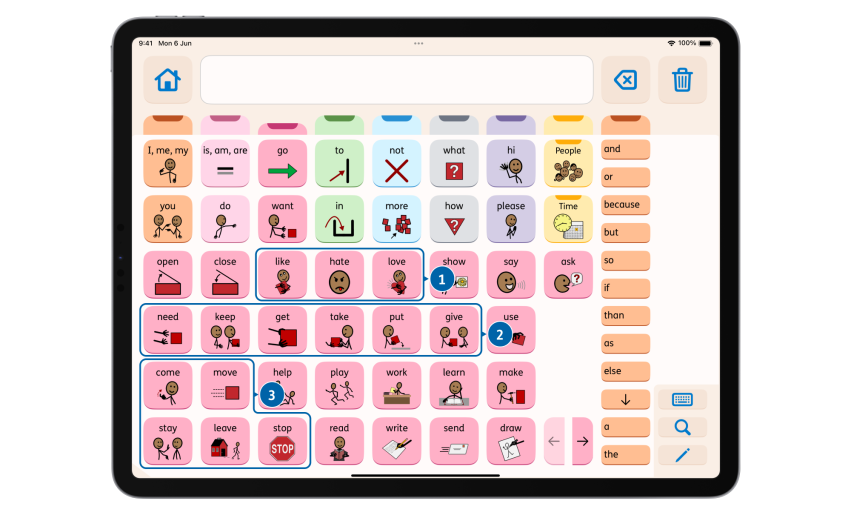Specific verbs
Some lower-frequency verbs are found in the fringe (yellow) tab. These are typically more specific verbs that are tied closely to specific domains. These words are frequently also used as nouns. Examples are words such as cook and slice in Food or drive and crash in Vehicles.
Related Words
As is the case for most words in Proloquo, verbs also provide Related Words. Generally these allow the user to be more specific. For example, the word go on the Home screen is the most general way to refer to going somewhere, but its Related Words offer a quick way to be more specific with words such as drive, fly, ride, and walk. Some verbs were too low in frequency to give them a button of their own. Many of those verbs can be found as a Related Word of a more common verb.
Movement verbs
The Movement folder in the fringe tab provides access to a rich set of specific verbs related to movement. Examples are words such as walk and slide, blow and smile. There is also a sub-folder with movement related sounds such as whistle and snore.
Clustering
In Crescendo Evolution™ buttons are not organized alphabetically but clustered conceptually. Alphabetic organization may help literate adults to initially find words, but it does not help young AAC users still developing language. It also does not aide in developing motor-memory for the location of words. In the end we gave priority to: (1) long-term efficiency, with the most frequently used words on the first page of each tab and (2) making sure the words from the Home screen would be in the exact same spot on the first page of the opened tab. Both of these things are not possible with an alphabetic organization.
Verbs are generally clustered in terms of related meanings (semantic associations). In the two screenshots below are some examples of how the verbs were clustered. In the first image you can see some (1) helper verbs, (2) abstract verbs, and (3) sensing verbs. In the second image you can see clusters related to (1) appreciation, (2) possession, and (3) movement.







